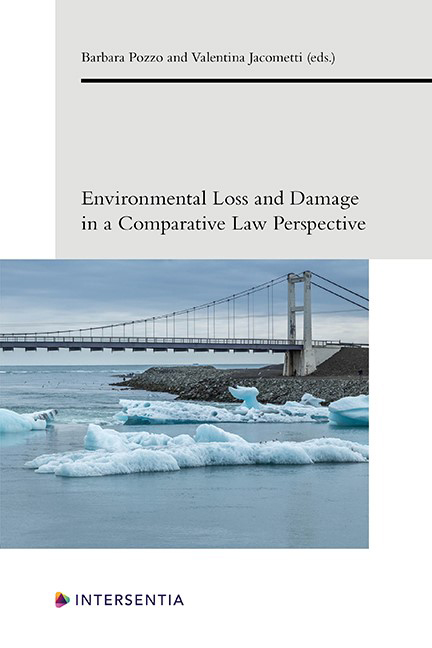Book contents
- Frontmatter
- Preface
- Contents
- List of Authors
- PART I LIABILITY FOR ENVIRONMENTAL HARM IN THE EU
- PART II PRIVATE AND CORPORATE ENVIRONMENTAL LIABILITY
- PART III THE ROLE OF CRIMINAL LIABILITY
- PART IV LEGAL TRANSPLANTS IN THE ENVIRONMENTAL FIELD: THE CASE OF ENVIRONMENTAL LIABILITY
- PART V STATE AND INTERNATIONAL ENVIRONMENTAL LIABILITY
- PART VI CLIMATE CHANGE LIABILITY
- PART VII LIABILITY, CLIMATE CHANGE AND NATURAL HAZARDS: THE ROLE OF INSURANCE
- PART VIII REAL COMPENSATION AND OFFSET REGIMES: THE STRATEGY OF “NO NET LOSS”
- About the Editors
The CERCLA Model: Past, Present and Future
Published online by Cambridge University Press: 26 May 2021
- Frontmatter
- Preface
- Contents
- List of Authors
- PART I LIABILITY FOR ENVIRONMENTAL HARM IN THE EU
- PART II PRIVATE AND CORPORATE ENVIRONMENTAL LIABILITY
- PART III THE ROLE OF CRIMINAL LIABILITY
- PART IV LEGAL TRANSPLANTS IN THE ENVIRONMENTAL FIELD: THE CASE OF ENVIRONMENTAL LIABILITY
- PART V STATE AND INTERNATIONAL ENVIRONMENTAL LIABILITY
- PART VI CLIMATE CHANGE LIABILITY
- PART VII LIABILITY, CLIMATE CHANGE AND NATURAL HAZARDS: THE ROLE OF INSURANCE
- PART VIII REAL COMPENSATION AND OFFSET REGIMES: THE STRATEGY OF “NO NET LOSS”
- About the Editors
Summary
INTRODUCTION: CERCLA AS A POINT OF REFERENCE FOR DIRECTIVE 2004/35
The Comprehensive Environmental Response Compensation and Liability Act (commonly referred to as CERCLA or Superfund) is one of the major environmental federal statutes of the United States of America and was passed by Congress on 11 December 1980. Its origin dates back and is linked to the tragedy that occurred in the State of New York on 2 August 1978 (the so-called Love Canal tragedy), and more generally to the ecological disasters that occurred during that decade. At that time, Congress's primary goal was to clean up inactive and abandoned hazardous waste sites and at the same time to prevent taxpayers from having to bear the related costs; for this reason, CERCLA imposed liability on a long list of “potentially responsible parties” (PRPs).
The list also includes past and current owners and operators of the facility from which the release of hazardous substances occurred, owners and operators of the site or facility where a hazardous substance has come to be located, and even anyone who “arranged for disposal” of the hazardous substance. Until very recently, the liability was considered strict and joint and several; having to deal with historic contamination and abandoned hazardous waste sites, the Act also had retroactive applicability. At the time the Act was issued, any landowners (whether “innocent” or not) who have had a “contractual relationship” with the polluter, as well as any person who exercised any kind of control over the activity or the substance (“operator” or “arranger”), was thus considered responsible for the full costs of clean-up.
The two major legislative reforms that occurred in 1986 and 2002 have not changed the approach; CERCLA's major focus still remains the clean-up of inactive hazardous waste sites and the distribution of clean-up costs among certain parties who had any involvement with the hazardous substances. However, since the very beginning, CERCLA has also contained provisions to protect damages to natural resources; in this case, government claims aim to recover costs associated with the loss of a contaminated area's natural resources (Section 107(a)(4)(C)). As we shall see, considering that the protection of natural resources is granted by the use of trust law principles, this represented and still represents a very innovative approach.
- Type
- Chapter
- Information
- Environmental Loss and Damage in a Comparative Law Perspective , pp. 245 - 262Publisher: IntersentiaPrint publication year: 2021



